GLYCIDYL ISOPROPYL ETHER
Synonym(s):2,3-Epoxypropyl isopropyl ether;Isopropoxymethyloxirane, Isopropyl glycidyl ether
- CAS NO.:4016-14-2
- Empirical Formula: C6H12O2
- Molecular Weight: 116.16
- MDL number: MFCD00005139
- EINECS: 223-672-9
- SAFETY DATA SHEET (SDS)
- Update Date: 2024-12-18 14:15:30
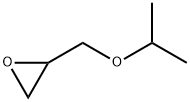
What is GLYCIDYL ISOPROPYL ETHER?
Chemical properties
colourless liquid
The Uses of GLYCIDYL ISOPROPYL ETHER
Glycidyl isopropyl ether is a stabilizer of chlorinated solvents, and viscosity reducer of epoxy resins.
The Uses of GLYCIDYL ISOPROPYL ETHER
Isopropyl glycidyl ether (IGE) is used to sta-bilize chlorinated solvents and as a viscosityreducer of epoxy resins.
The Uses of GLYCIDYL ISOPROPYL ETHER
Reactive diluent for epoxy resins; stabilizer for organic compounds; chemical intermediate for synthesis of ethers and esters
Production Methods
Isopropyl glycidyl ether is manufactured through the condensation of isopropyl alcohol and epichlorohydrin with subsequent dehydrochlorination with caustic to form the epoxy ring.
General Description
Colorless liquid.
Air & Water Reactions
Highly flammable. Water soluble.
Reactivity Profile
Ethers can act as bases. They form salts with strong acids and addition complexes with Lewis acids. The complex between diethyl ether and boron trifluoride is an example. Ethers may react violently with strong oxidizing agents. In other reactions, which typically involve the breaking of the carbon-oxygen bond, ethers are relatively inert.
Hazard
Flammable liquid with flash p 92F (33.33C). Skin, eye and respiratory tract irritant.
Health Hazard
Exposure can cause mental confusion and moderate irritation of the eyes, skin, and respiratory tract. Chronic exposure can cause dermatitis and skin sensitization.
Health Hazard
IGE is a skin and eye irritant with lowtoxicity. Irritation in rabbits’ eyes and skincaused by 100 mg was moderate to low.In humans, frequent skin contact may causedermatitis.
Studies on rats indicated low toxicity ofthis compound with symptoms of respiratorydistress. Prolonged exposure caused ocularirritation and depression of the central ner-vous system. An increase in hemoglobin anda decrease in peritoneal fat was observed.
Fire Hazard
Flammable; flash point (closed cup) 33°C (92°F); vapor pressure 9.4 torr at 25°C (77°F); forms explosive mixtures with air, LEL and UEL values not reported; fire- extinguishing agent: use a water spray to extinguish fire.
Properties of GLYCIDYL ISOPROPYL ETHER
| Boiling point: | 131-132 °C (lit.) |
| Density | 0.924 g/mL at 25 °C (lit.) |
| vapor pressure | 13 hPa (25 °C) |
| refractive index | n |
| Flash point: | 92 °F |
| storage temp. | Store below +30°C. |
| solubility | 188g/l |
| form | Colorless liquid |
| color | Colorless to Almost colorless |
| PH | 7 (188g/l, H2O, 20℃) |
| Water Solubility | 19g/L at 25℃ |
| BRN | 103028 |
| Exposure limits | TLV-TWA 240 mg/m3
(50 ppm); TLV-STEL
360 mg/m3
(75 ppm) (ACGIH); 15-minute
ceiling 50 ppm (NIOSH); IDLH 1500 ppm
(NIOSH). |
| Stability: | Stable. Flammable. Incompatible with strong oxidizing agents. |
| CAS DataBase Reference | 4016-14-2(CAS DataBase Reference) |
| EPA Substance Registry System | Isopropyl glycidyl ether (4016-14-2) |
Safety information for GLYCIDYL ISOPROPYL ETHER
| Signal word | Danger |
| Pictogram(s) |
 Flame Flammables GHS02  Skull and Crossbones Acute Toxicity GHS06  Health Hazard GHS08 |
| GHS Hazard Statements |
H226:Flammable liquids H317:Sensitisation, Skin H331:Acute toxicity,inhalation H334:Sensitisation, respiratory H341:Germ cell mutagenicity |
| Precautionary Statement Codes |
P201:Obtain special instructions before use. P210:Keep away from heat/sparks/open flames/hot surfaces. — No smoking. P280:Wear protective gloves/protective clothing/eye protection/face protection. P302+P352:IF ON SKIN: wash with plenty of soap and water. P308+P313:IF exposed or concerned: Get medical advice/attention. |
Computed Descriptors for GLYCIDYL ISOPROPYL ETHER
New Products
(S)-3-Aminobutanenitrile hydrochloride 4-Methylphenylacetic acid N-Boc-D-alaninol N-BOC-D/L-ALANINOL Tert-butyl bis(2-chloroethyl)carbamate 3-Morpholino-1-(4-nitrophenyl)-5,6-dihydropyridin- 2(1H)-one Furan-2,5-Dicarboxylic Acid Tropic acid 1-Bromo-3,5-Di-Tert-Butylbenzene S-2-CHLORO PROPIONIC ACID ETHYL ISOCYANOACETATE 2-Bromo-1,3-Bis(Dimethylamino)Trimethinium Hexafluorophosphate 4-IODO BENZOIC ACID 3-NITRO-2-METHYL ANILINE 1-(2,4-DICHLOROPHENYL) ETHANAMINE (2-Hydroxyphenyl)acetonitrile 4-Bromopyrazole 2-(Cyanocyclohexyl)acetic acid 4-methoxy-3,5-dinitropyridine 1-(4-(aminomethyl)benzyl)urea hydrochloride 2-aminopropyl benzoate hydrochloride diethyl 2-(2-((tertbutoxycarbonyl)amino) ethyl)malonate tert-butyl 4- (ureidomethyl)benzylcarbamate Ethyl-2-chloro((4-methoxyphenyl)hydrazono)acetateRelated products of tetrahydrofuran
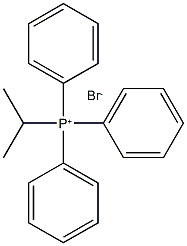

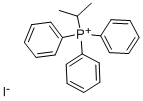
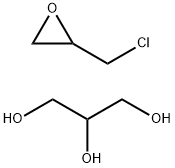
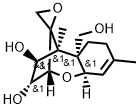
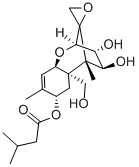
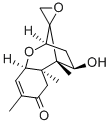
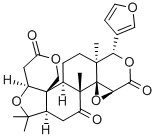
You may like
-
 Glycidyl Isopropyl Ether CAS 4016-14-2View Details
Glycidyl Isopropyl Ether CAS 4016-14-2View Details
4016-14-2 -
 Glycidyl isopropyl ether CAS 4016-14-2View Details
Glycidyl isopropyl ether CAS 4016-14-2View Details
4016-14-2 -
 1975-50-4 98%View Details
1975-50-4 98%View Details
1975-50-4 -
 2-HYDROXY BENZYL ALCOHOL 98%View Details
2-HYDROXY BENZYL ALCOHOL 98%View Details
90-01-7 -
 2-Chloro-1,3-Bis(Dimethylamino)Trimethinium Hexafluorophosphate 221615-75-4 98%View Details
2-Chloro-1,3-Bis(Dimethylamino)Trimethinium Hexafluorophosphate 221615-75-4 98%View Details
221615-75-4 -
 61397-56-6 CIS BROMO BENZOATE 98%View Details
61397-56-6 CIS BROMO BENZOATE 98%View Details
61397-56-6 -
 14714-50-2 (2-Hydroxyphenyl)acetonitrile 98+View Details
14714-50-2 (2-Hydroxyphenyl)acetonitrile 98+View Details
14714-50-2 -
 118753-70-1 98+View Details
118753-70-1 98+View Details
118753-70-1